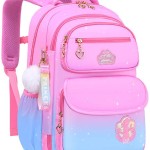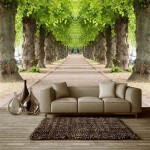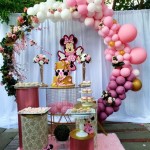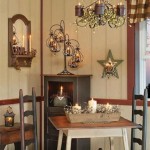How to Decorate Mini Rooms in Cats & Soup
Cats & Soup, the popular mobile game, allows players to manage a soup-making operation run by adorable cats. A significant aspect of the game is the ability to customize and decorate the mini rooms assigned to each feline worker. These mini rooms provide a personal space for the cats and contribute to the overall aesthetic of the game. Effective decoration relies on understanding the available options, strategically using resources, and creating a visually appealing and functional space for the virtual cats.
The mini room decoration feature in Cats & Soup provides a creative outlet for players within the game. Each cat is assigned a personal room which can be customized with a variety of furniture, wallpapers, flooring, and decorative items. The design and arrangement of the mini room can impact the player’s engagement with the game, adding a personal touch to the soup production process.
The game offers a diverse selection of items for decorating the mini rooms. These items are generally categorized and can be acquired through various in-game activities, such as completing tasks, participating in events, and purchasing them with game currency. Understanding the different types of items and their purpose is crucial for effective room design.
Understanding Available Decorative Items
The game usually provides a variety of categories of decoration items which are vital for custom mini rooms. Some of the main categories are:
Furniture: This category includes essential items like beds, chairs, tables, and desks. These objects provide a function for the cats, such as sleeping, sitting, or working. Furniture pieces often come in various styles and colors, allowing customization based on the player’s preferences.
Wallpapers and Flooring: Wallpapers and flooring options allow players to change the overall look and feel of the room. These typically come in a range of patterns, colors, and materials, enabling specific themes to be created. Choosing the right wallpaper and flooring can significantly enhance the visual appeal of the mini room.
Decorative Items: These items encompass plants, paintings, toys, and other miscellaneous objects. These objects serve primarily to add visual interest and detail to the room, creating a more personalized and cozy environment. Strategic placement of decorative items can enhance the overall aesthetic of the mini room.
Lighting: Different lamps and light fixtures can alter the mood of the room. Warm lighting can create a cozy atmosphere while brighter lights can make the room look more spacious and vibrant. The right lighting can drastically improve the impression of the mini room.
Special Items: These are unique and often limited-time items that can be obtained during in-game events or promotions. They often feature themed designs related to specific holidays or collaborations. Special items can add a unique flair to the mini rooms.
Acquiring these decorative items typically involves using in-game currency earned by completing tasks, participating in events, or through daily rewards. Some items may also be obtained through the game's gacha system, requiring players to spend premium currency for a chance to win specific items.
Before starting the decorating process, it is beneficial to plan the layout of the mini room. This entails considering the available space, the function of the room, and the desired aesthetic. Effective planning can help to avoid overcrowding and ensures a visually pleasing and functional space.
Planning and Layout Strategies
Planning the layout efficiently involves identifying the focus and functionality of the room. This process can be optimized by employing a variety of strategies.
Theme Selection: Choosing a theme for the mini room can guide the selection of furniture, wallpapers, and decorative items. Themes can be based on colors, styles, or specific holidays. Selecting a theme provides a cohesive direction for the design process.
Space Optimization: Efficiently utilizing the available space is crucial for preventing overcrowding. Consider the size and placement of furniture to ensure that the cats can move around comfortably. Smaller decorative items can be used to fill gaps and add detail without overwhelming the space.
Functionality: Consider the function of the room when planning the layout. A sleeping area should include a comfortable bed and perhaps a nightstand. A working area can include a desk, chair, and decorative plants. Aligning the layout with the intended function of the room enhances the game experience.
Color Coordination: Coordinating the colors of the furniture, wallpapers, and decorative items can create a harmonious and visually appealing room. Choosing a color palette and sticking to it can streamline the design process and create a cohesive look.
Focal Points: Creating focal points within the room can draw the eye and add visual interest. This can be achieved by placing a striking piece of furniture, a large decorative item, or a vibrant wallpaper pattern in a prominent location. A focal point can anchor the design and create a sense of balance.
Once the planning is complete, the actual decorating process involves placing the selected items within the mini room. Experimentation can be required to find the optimal arrangement. Adjustments may need to be made based on the visual impact and overall functionality of the space.
Implementing decoration strategies involves the methodical placement of items and consideration of spatial relationships. The following tips will assist you in the detailed decoration stage.
Implementing Decoration Strategies
The actual decorating process is a step-by-step procedure that involves meticulous attention to details. The arrangement of items, the color palette, and the overall theme should all work in harmony to create a pleasant environment for the virtual cats.
Placement of Furniture: Begin by placing the larger furniture pieces first, such as beds and desks. This helps to establish the basic layout of the room. Ensure that there is enough space around the furniture for the cats to move around and interact with the environment.
Wall and Floor Selection: After the furniture is in place, choose the wallpaper and flooring that complement the chosen theme. Consider the color and pattern of the wallpaper and flooring to ensure that they enhance the overall look of the room. Avoid clashing colors or patterns that can detract from the visual appeal.
Adding Decorative Items: Decorative items should be strategically placed to add detail and visual interest. Plants can be placed near windows or on desks to add a touch of nature. Paintings can be hung on walls to add color and personality. Toys can be placed on the floor to create a playful atmosphere.
Lighting Adjustments: Lighting can play a significant role in the overall ambiance of the room. Experiment with different lamps and light fixtures to find the right balance of light and shadow. Warm lighting can create a cozy and inviting atmosphere, while brighter lights can make the room feel more open and spacious.
Iterative Refinement: The decorating process is often iterative, requiring adjustments and refinements. Step back and evaluate the overall look of the room after each addition. Adjust the placement of items, change the wallpaper, or swap out decorative items as needed to achieve the desired aesthetic.
Effective utilization of resources is crucial for maximizing the decorating potential within Cats & Soup. Acquiring sufficient in-game currency and managing the available items are essential for creating aesthetically pleasing mini rooms.
Resource management is a crucial aspect of the game. Efficiently managing in-game currency and acquired items allows optimizing the potential for decorating the mini rooms. To improve resource management, consider the following:
Earning In-Game Currency: Focus on completing daily tasks, participating in events, and fulfilling customer orders to earn in-game currency. These activities provide a steady stream of resources that can be used to purchase new furniture, wallpapers, and decorative items.
Strategic Purchasing: Prioritize purchasing items that align with the chosen theme for the mini room. Avoid impulsive purchases of items that do not fit the overall design. Plan purchases in advance to ensure that resources are used efficiently.
Item Management: Keep track of the items that have been acquired and their potential use. Organizing items by category or theme can help to quickly find the right items when decorating. Consider selling unwanted items to free up space and earn additional in-game currency.
Event Participation: Participate in in-game events to earn special items and exclusive rewards. Events often offer opportunities to acquire unique furniture, wallpapers, and decorative items that are not available through regular purchases.
By understanding the available decorative items, planning the layout strategically, implementing decoration strategies, and effectively managing resources, players can create visually appealing and functional mini rooms for their cats in Cats & Soup. This enhances the overall gaming experience and provides a creative outlet within the game.

Cats And Soup Mini Room

Cats Soup Room Decorations

Cat Room Inspiration Cozy Mini With Cats

Cats Soup Room Decorations Kitty American Shorthair

Cats And Soup Gameplay Eps 142 Decor Pastry Mini Room

Cats Soup 50 Mini Room Ideas

Cats And Soup Mini Room Cat Cute Drawing Baby Cows

Here Are Some Of My Cats Unfinished Mini Room Design Catsandsoup Tiktok

Cats And Soup Mini Room Lucu

Pin By Thanh D On Cat Soup Cow Room Kitty
Related Posts







